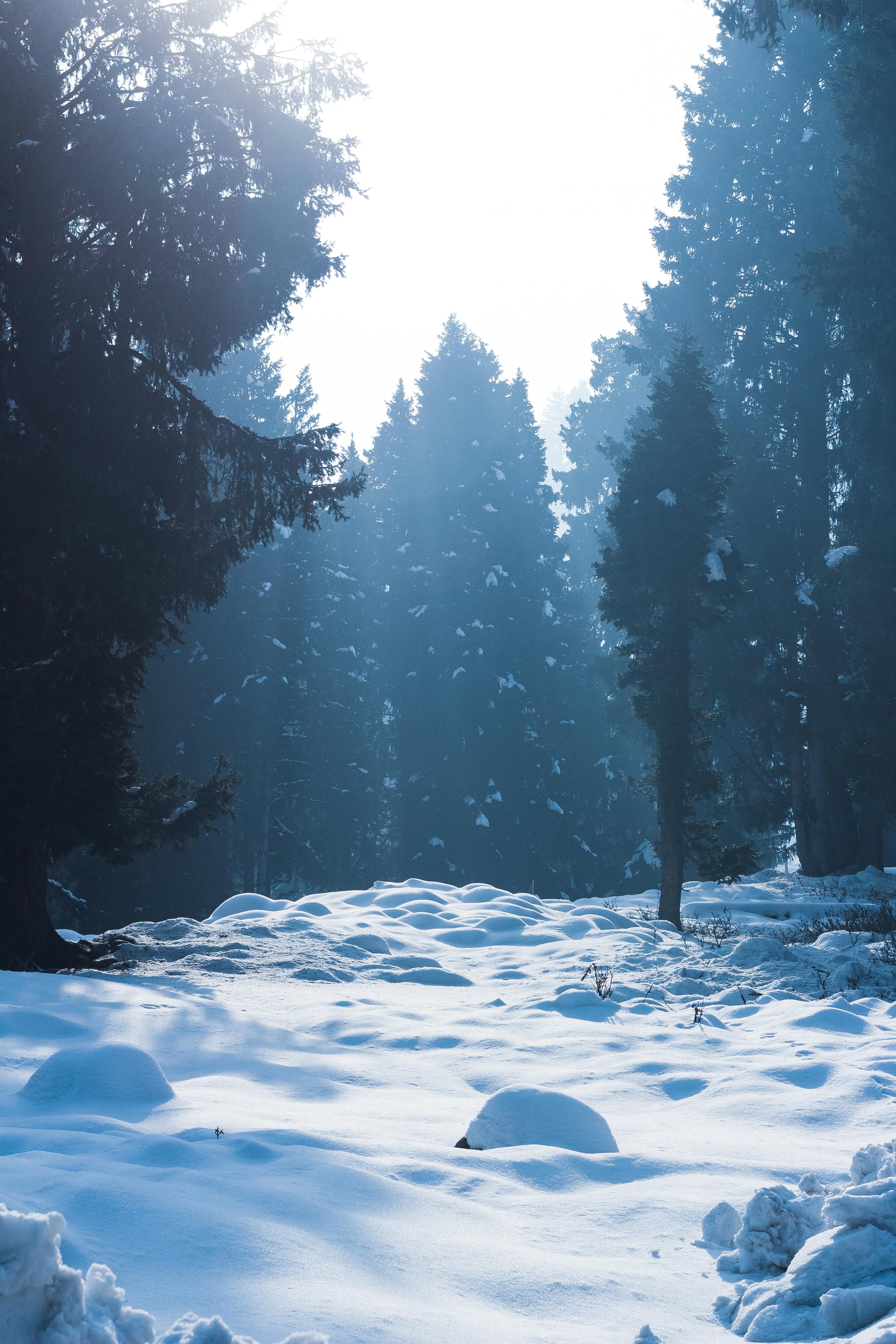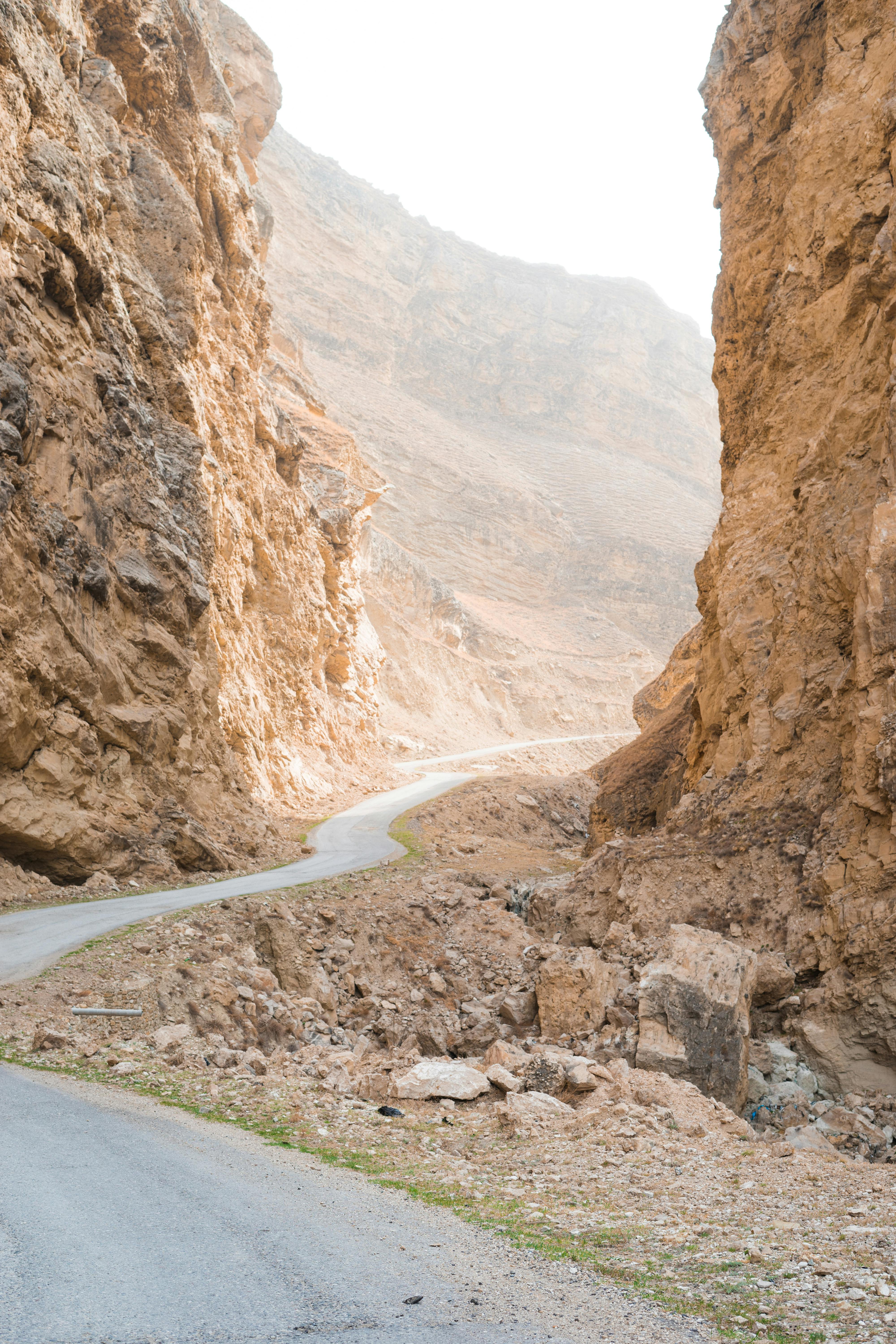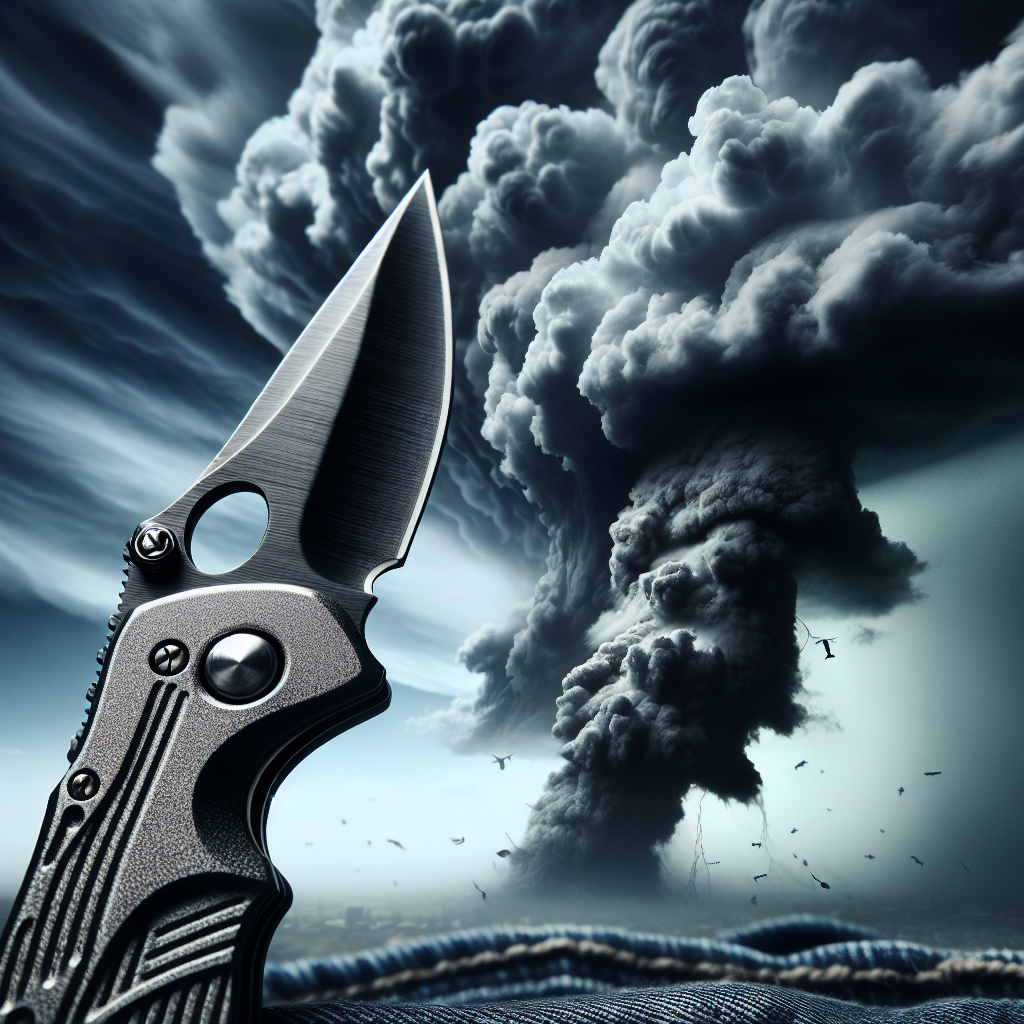In the face of natural disasters, it’s crucial to not only have the essential supplies and emergency plans in place, but also to be prepared to defend yourself and your loved ones if needed. When we find ourselves confronted by Mother Nature’s fury, being equipped with self-defense techniques and strategies can make all the difference between life and death. In this article, find out why self-defense in natural disasters is a vital skill to possess and discover effective ways to protect yourself in times of crisis.
Understanding the Importance of Self-Defense in Natural Disasters
Natural disasters can strike unexpectedly, leaving communities vulnerable and in chaos. In the face of such catastrophes, it is crucial to understand the importance of self-defense in order to protect yourself and your loved ones. Recognizing the vulnerability that comes with these disasters is the first step in realizing the necessity for self-defense skills. From earthquakes to floods, hurricanes to wildfires, being prepared and equipped with the right knowledge and tools can make a significant difference in surviving and overcoming these unfortunate events.
Recognizing the Vulnerability in Disasters
When a natural disaster strikes, it can disrupt the entire infrastructure of a community, leaving individuals and families exposed and vulnerable. While emergency services are typically activated in response to these events, their resources may be stretched thin, making it challenging to provide immediate assistance to everyone in need. In such situations, having the ability to defend yourself and your loved ones becomes paramount. By understanding the unique risks and challenges that each disaster presents, you can better prepare yourself to navigate these difficult circumstances.

Why Self-Defense Skills Are Crucial in Natural Disasters
Self-defense skills are not just about physical combat; they encompass a range of techniques and strategies necessary for survival in challenging circumstances. In natural disasters, where chaos and danger abound, having these skills can mean the difference between life and death. Being able to assess threats, react quickly, and make informed decisions can ensure your safety and the safety of those around you. Self-defense skills provide the knowledge and confidence needed to protect yourself, meet the physical demands of the situation, and adapt to the ever-changing circumstances that arise in a disaster.
The Role of Empowerment and Confidence in Surviving Natural Disasters
In addition to physical techniques, self-defense in natural disasters is intrinsically linked to empowerment and confidence. When faced with unexpected and stressful situations, having belief in your abilities and feeling empowered to act decisively are invaluable assets. By cultivating a mindset of strength and resilience, you can face the challenges posed by a natural disaster with a clear and focused mind. Empowerment and confidence allow you to maintain composure, make quick decisions, and effectively communicate with others, all of which are crucial for survival and navigating the aftermath of a disaster.

Preparation for Self-Defense in Natural Disasters
Preparation is key when it comes to self-defense in natural disasters. By taking proactive measures, you can significantly increase your chances of staying safe during and after these events. Assembling a disaster survival kit is an essential first step. This kit should include items such as non-perishable food, water, flashlights, batteries, a first aid kit, and any necessary medication. It’s important to regularly check and replenish your kit to ensure it remains fully stocked in case of an emergency.
Staying informed about potential natural disasters is another crucial aspect of preparation. Pay attention to weather reports, news updates, and local emergency services’ recommendations. Familiarize yourself with the types of natural disasters that can occur in your area, as well as the warning signs and appropriate actions to take. This knowledge will allow you to respond quickly and effectively in the event of an impending disaster.
Developing a safety plan for various scenarios is equally important. Consider creating evacuation routes and identifying safe areas within your community where you can seek shelter if needed. Communicate and formulate plans with your family, neighbors, and community members to ensure everyone is on the same page. Regularly practice drills and assess your safety plan for any necessary updates or improvements. By being prepared, you can better defend yourself and reduce the risks associated with natural disasters.
Physical Self-Defense Techniques for Natural Disasters
In natural disasters, physical self-defense techniques can help you navigate dangerous situations and protect yourself from harm. Hand-to-hand combat techniques, such as basic striking and grappling maneuvers, can be valuable when confronted with an attacker or when you need to defend yourself from wild animals that may have been displaced by the disaster. Learning how to use defensive weaponry and improvised tools, such as pepper spray, sticks, or even everyday objects, can provide an extra layer of protection. It’s essential to understand the laws and regulations surrounding the use of defensive tools in your area.
Escape and evasion strategies are also crucial skills to have during a natural disaster. Being able to move quickly and efficiently to reach safety can be a matter of life or death. Understanding how to navigate obstacles, create diversions, and find the safest routes in challenging conditions can greatly increase your chances of survival. Learning these physical self-defense techniques and practicing them regularly ensures that you are prepared to face the physical challenges that may arise during a natural disaster.

Psychological Self-Defense Strategies for Natural Disasters
While physical self-defense techniques are important, it is equally vital to develop psychological self-defense strategies to enhance your overall resilience in the face of a natural disaster. Maintaining a calm and focused mindset is key when confronted with stressful and dangerous situations. It allows you to assess the situation objectively and make sound decisions. Breathing exercises, visualization techniques, and meditation practices can help you stay centered and calm during high-stress moments.
Psychological preparedness and resilience are also vital aspects of self-defense in natural disasters. By mentally preparing yourself for the possibility of a disaster, you can reduce the shock and panic that may arise in the heat of the moment. Process your emotions and fears surrounding natural disasters and develop coping mechanisms to help you manage stress and trauma.
Effective communication and cooperation with others are essential when it comes to psychological self-defense. During a natural disaster, communities often come together to support one another. Being able to effectively communicate your needs and offer assistance to others can create a sense of unity and result in a more coordinated response. By fostering a supportive network of individuals, you can collectively navigate the challenges that natural disasters present.
Protecting Your Home and Property during Natural Disasters
When it comes to natural disasters, protecting your home and property is of utmost importance. By taking specific measures, you can reduce the risks that these events pose to your living space. Securing windows, doors, and other vulnerable areas is a crucial step. Reinforcing doors with sturdy locks and installing impact-resistant glass can help prevent damage and intrusion during high winds or flooding. Boarding up windows can protect against flying debris and potential break-ins.
Creating hazard-free zones within your property is another essential aspect of self-defense. This involves removing any objects or materials that can become projectiles during a natural disaster, such as loose branches or outdoor furniture. Keeping your yard well-maintained and free from clutter can also help minimize risks. Regularly inspecting your property for potential hazards and addressing them promptly can significantly contribute to your safety during a disaster.
Using surveillance and alarm systems adds an extra layer of security to your home and property. Installing security cameras and motion sensor lights can deter potential intruders and provide valuable evidence if any crimes occur in the aftermath of a natural disaster. Utilizing alarm systems can alert you to potential risks, such as flooding or smoke, and prompt you to take immediate action. By implementing these measures, you can protect your home and property, ensuring a safer environment for yourself and your loved ones.
Self-Defense for Specific Natural Disasters
Different natural disasters require specific self-defense techniques to ensure survival. Understanding how to react and navigate in each unique scenario is crucial. Let’s explore self-defense strategies for some common natural disasters:
Earthquakes: Reacting and Surviving the Shaking Ground
During an earthquake, the ground shakes violently, causing widespread destruction. To protect yourself, remember to “Drop, Cover, and Hold On.” Drop to the ground, take cover under a sturdy piece of furniture, and hold on until the shaking stops. Avoid doorways and windows as they can be hazardous. After the earthquake, be cautious of aftershocks and check for injuries before attempting to evacuate. Knowing how to identify safe areas and hazardous structures is key to surviving an earthquake.
Floods: Swimming and Navigating in Dangerous Waters
In the event of a flood, knowing how to swim and navigate in dangerous waters is essential. If you find yourself in swiftly moving water, try to maintain a floating position on your back, using your arms and legs to steer yourself around any obstacles. Avoid clinging to debris, as it can lead to entrapment. If possible, reach for a stable object or higher ground until help arrives. Being aware of flood-prone areas and having a solid understanding of water safety can greatly increase your chances of survival.
Hurricanes: Battling High Winds and Torrential Rain
When facing a hurricane, the primary threats are high winds and torrential rain. Staying indoors and seeking shelter in a sturdy building is the first line of defense. Secure windows and doors and stay away from them during the storm. Avoid using candles and open flames, as they pose a fire hazard in case of power outages. If you are caught outside, seek shelter in low-lying areas and protect yourself from flying debris. Following evacuation orders, if issued, is crucial for staying safe during a hurricane.
Self-Defense in the Wilderness during Natural Disasters
Natural disasters can sometimes strand individuals in the wilderness, presenting additional challenges and risks. Knowing how to navigate through dense forests and rough terrain is crucial in such situations. Familiarize yourself with basic orienteering skills, such as using a compass and reading topographical maps. Understanding the land and environment can help you find your way to safety. It’s also essential to locate suitable shelter and ensure access to food and water sources. Building a fire for warmth and signaling for help can be life-saving techniques. Additionally, being aware of the potential threats posed by wildlife and knowing how to respond appropriately will greatly contribute to your self-defense in the wilderness.
Post-Disaster Self-Defense: Recovery and Rebuilding
Even after a natural disaster has passed, self-defense remains crucial during the recovery and rebuilding phases. First aid and emergency medical skills are essential in providing immediate assistance to injured individuals. Knowing how to administer CPR, treat wounds, and handle medical emergencies can save lives. Managing stress and trauma is equally important, as the psychological impact of a disaster can be long-lasting. Seek support from mental health professionals or support groups to process the emotions and potential trauma associated with the event.
Community building and mutual support play a significant role in post-disaster self-defense. Coming together as a community to assist one another in rebuilding homes, sharing resources, and providing emotional support can foster resilience and aid in the recovery process. Establishing and maintaining strong relationships with local emergency services is also vital. They can provide guidance, support, and resources during the recovery phase. Together, these post-disaster self-defense strategies contribute to the overall well-being and safety of the affected community.
Training and Resources for Self-Defense in Natural Disasters
To effectively defend yourself and others during natural disasters, training and access to resources are essential. Self-defense classes and martial arts training can equip you with the necessary skills to navigate dangerous situations confidently. These classes focus on techniques specific to self-defense in various scenarios, helping you develop the physical and mental prowess to handle adversity effectively.
Online resources and communities for disaster preparedness provide valuable information and support. Websites, forums, and social media groups dedicated to sharing tips, experiences, and resources can serve as a wealth of knowledge. Taking advantage of these resources can enhance your understanding of self-defense in natural disasters and provide crucial insight into the strategies employed by others.
Working with local emergency services is an integral part of self-defense in natural disasters. Reach out to these services to understand their protocols and resources. They can provide training opportunities, community outreach programs, and guidance on creating a comprehensive safety plan. Collaborating with local emergency services fosters a strong relationship between the community and these crucial services, ensuring a more coordinated response during times of crisis.
Conclusion
Embracing self-defense as a vital tool in natural disasters is essential for ensuring personal safety and the well-being of those around you. The combination of physical and psychological self-defense techniques, along with the protection of your home and property, prepares you to face the challenges that disasters present. By developing a proactive mindset, continuously training, and staying informed, you empower yourself to navigate the unexpected and recover stronger from the aftermath. Self-defense in natural disasters is not just about individual survival; it is about fostering resilience and empowering entire communities to withstand and overcome even the most unexpected of challenges.






